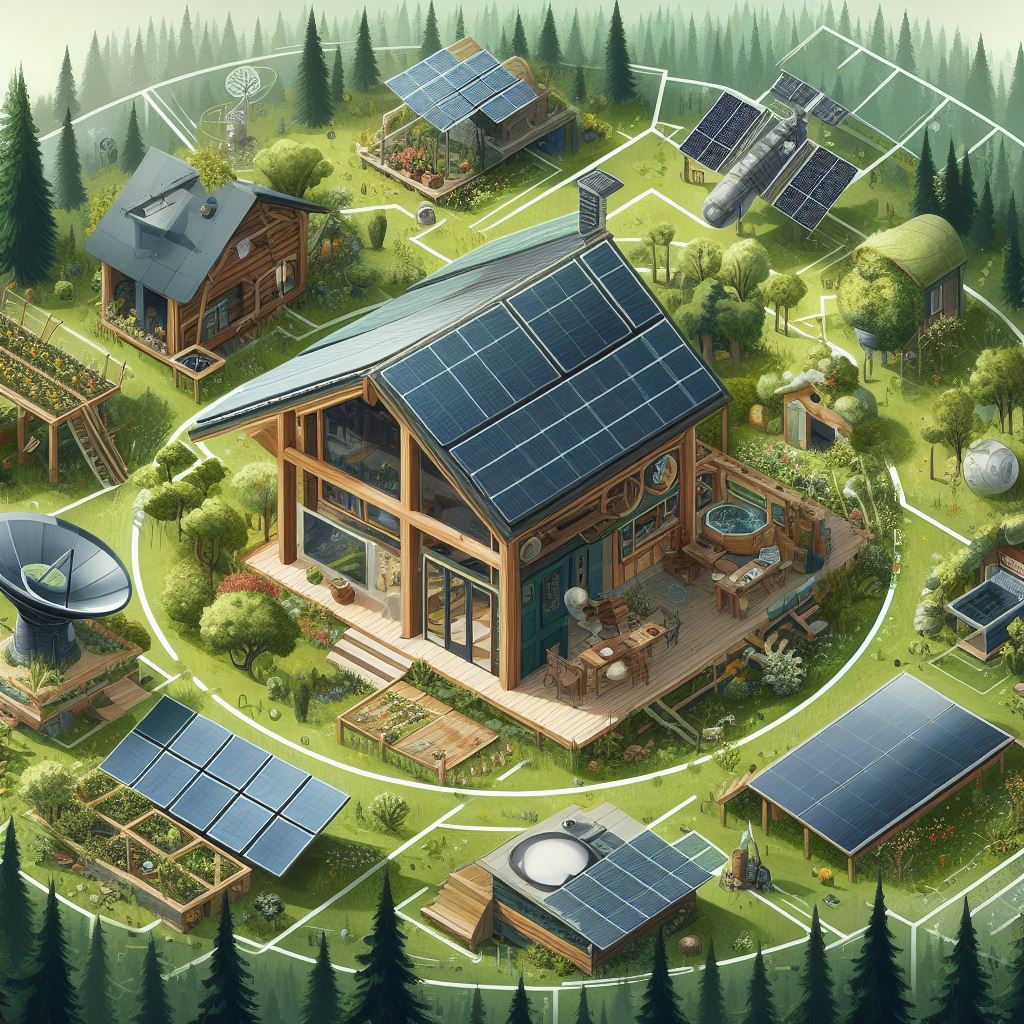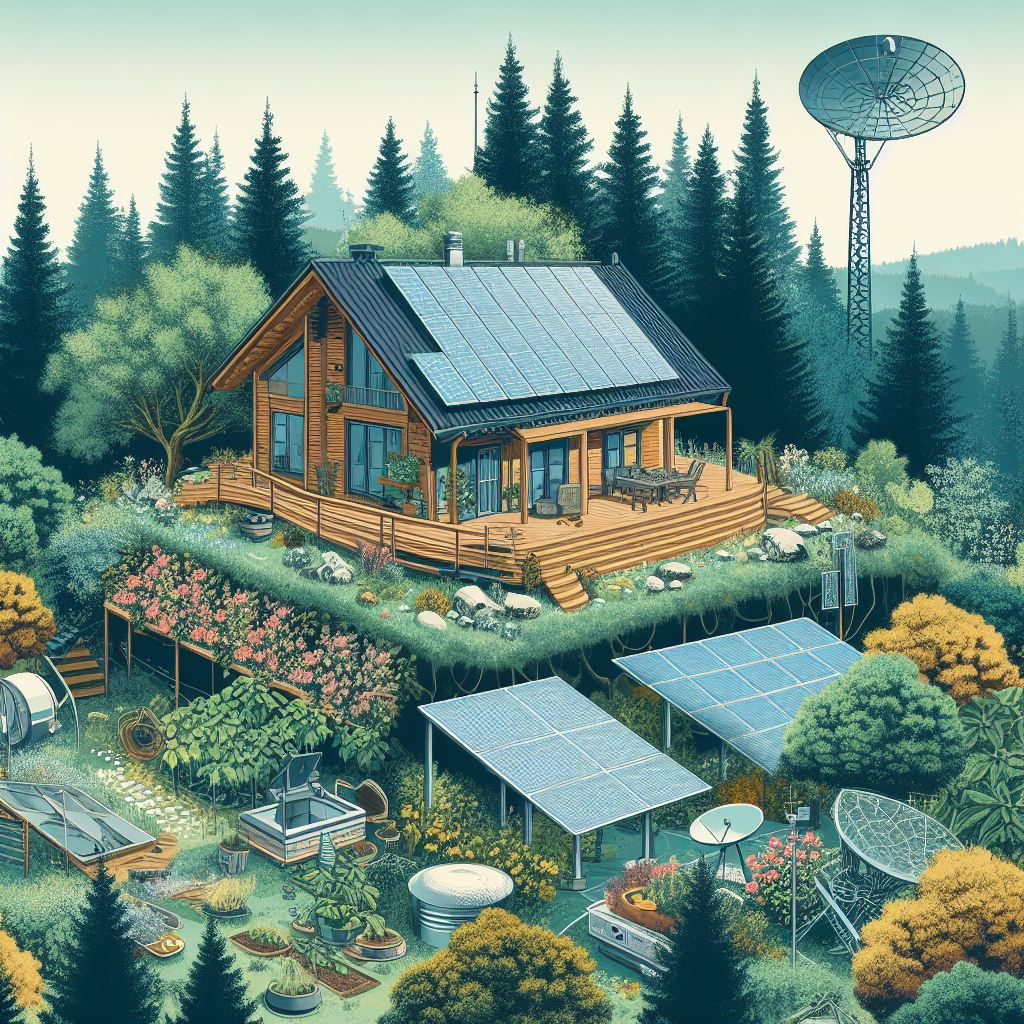
Off-the-Grid Living: Back to Basics in a Digital Age
Introduction to Off-the-Grid Living and Its Relevance Today
In an era characterized by technology, rapid urbanization, and digital dependence, the allure of "off-grid living" has become increasingly pronounced. Off-grid living, essentially a lifestyle choice to disconnect from public utilities and live a more self-sufficient life, has been viewed as both a return to basics and a nod to future sustainability. As more individuals grapple with the implications of a tech-saturated existence, the concept of living autonomously becomes not just attractive, but essential for some.
Historical Context and Evolution of Off-the-Grid Living
The allure of living away from the hustle and bustle of urbanized life is not a new phenomenon. However, the term "off-the-grid" and what it signifies today is rooted in both ancient practices and contemporary desires. To truly appreciate the modern iteration of off-grid living, one must delve into its historical evolution.
Ancient Beginnings:
-
Natural Dependence: Before the advent of large-scale civilization, early humans depended entirely on nature. They were the original "off-gridders", sourcing water from streams, hunting or gathering food, and using natural shelters or creating homes from available materials.
-
Nomadic Lifestyle: Many ancient tribes led nomadic lives, moving from place to place in search of resources. Their ability to adapt to different terrains and climates is a testament to the versatility of off-grid living.
-
First Settlements: The birth of agriculture allowed humans to settle and form the first villages. These were essentially off-the-grid, relying on local resources for sustenance.
Industrial Age and Urbanization:
-
Centralization of Resources: With the industrial revolution, large-scale production and centralized utilities became the norm. The grid was born, and people started relying on centralized sources for water, electricity, and goods.
-
Urban Migration: Job opportunities in factories and modern amenities led to massive urban migration. The grid expanded, and the once standard off-grid lifestyle became the exception.
20th Century: Rise of the Modern Off-Grid Movement:
-
Countercultural Movements: The 1960s and 70s saw countercultural movements in the West, where individuals and communities sought to return to the land, spurred by a mix of environmental concerns, disillusionment with consumerism, and a desire for self-sufficiency.
-
Technological Advancements: The latter half of the 20th century saw advancements in renewable energy technologies, particularly solar and wind energy. This made off-grid living more viable and efficient.
21st Century: Off-Grid Living in the Digital Age:
-
Environmental Concerns: With growing awareness of climate change, many chose off-grid living as a sustainable alternative, reducing carbon footprints and conserving resources.
-
Digital Connectivity: Modern technology, particularly the internet, has allowed off-gridders to maintain connections with the wider world. This balance between isolation and connectivity defines the contemporary off-grid experience.
-
Rising Costs and Economic Motivations: Increasing costs of utilities in urban areas have also pushed some to explore off-grid alternatives, seeking both financial freedom and autonomy.
-
Modern Off-grid Communities: Today, there are entire communities dedicated to off-grid living, sharing resources, knowledge, and innovations to enhance the experience.
"In essence, living off the grid today is a bridge between the past and the future, integrating ancient wisdom with modern innovation," observes Phillip Vannini in his comprehensive study of off-grid lifestyles. From the natural existence of ancient tribes to technologically-equipped cabins in remote woods, off-grid living has, over the centuries, transformed and adapted, embodying humanity's innate desire for autonomy, connection with nature, and sustainable existence.
Advantages and Challenges
Benefits of Off-the-Grid Living in Modern Times:
-
Eco-Friendly:
- Reduced Carbon Footprint: Living off the grid typically means utilizing renewable energy sources like solar and wind power, which have a much smaller carbon footprint compared to fossil fuels.
- Conservation: Many off-gridders adopt practices that conserve resources, from water to energy.
-
Financial Savings:
- No Utility Bills: Once initial setups are paid for, monthly costs are drastically reduced. No more electricity, water, or gas bills.
- Potential for Profit: Any excess energy generated, especially from solar setups, can be sold back to the grid in certain areas.
-
Mental Wellbeing:
- Connection with Nature: Many report enhanced mental health from closer ties with nature, away from urban stress.
- Sense of Achievement: There's undeniable satisfaction in being self-sufficient.
-
Self-sufficiency:
- Food Production: Many off-gridders cultivate their own gardens, ensuring organic, pesticide-free food.
- Resilience: Being less reliant on societal systems can offer security during times of crisis.
Challenges of Off-the-Grid Living:
-
Initial Setup Costs:
- Infrastructure Expense: Setting up solar panels, wind turbines, or water collection systems requires a significant upfront investment.
- Land Purchase: Unless inherited or gifted, purchasing land suitable for off-the-grid living can be costly.
-
Maintenance:
- Daily Upkeep: Systems need regular checks. Solar panels need cleaning, and water filters need changing.
- Skill Requirement: Many aspects of off-grid living, from fixing a turbine to preserving food, require learning new skills.
-
Isolation:
- Physical Distance: Many off-grid locations are remote, making regular socializing challenging.
- Limited Access to Services: Medical facilities, shopping centers, and other amenities might be far away.
-
Learning Curve:
- Acquiring New Knowledge: From understanding solar setups to basic farming, there's much to learn.
- Trial and Error: Especially early on, expect mistakes. Whether it's a crop failure or a battery setup error, patience and persistence are crucial.
-
Legislation and Regulation:
- Land Use Laws: Some regions have strict regulations about land use, which can impede certain off-grid activities.
- Utility Restrictions: Selling back to the grid or even setting up certain types of systems might be restricted.
A notable case study is the community of Three Rivers Recreation Area in Oregon. What began as a vacation spot evolved into a full-fledged off-grid community, with residents overcoming challenges through communal effort and innovative solutions.
Role of Technology
Technology, often perceived as the antithesis of a back-to-basics lifestyle, plays a pivotal role in modern off-the-grid living. Far from rejecting technology, many off-gridders harness it to enhance their self-sufficient practices, making life not just feasible but also efficient in remote settings.
How Technology Supports Off-grid Living:
-
Advanced Solar Panels:
- Efficiency: Modern solar panels have significantly higher efficiency rates, allowing for more energy to be harvested from the same amount of sunlight.
- Flexibility: Portable and foldable solar panels enable easy relocation and use, especially in transient off-grid setups.
-
Smart Water Harvesting:
- IoT Integration: Internet of Things (IoT) devices can now monitor and manage water resources, ensuring optimal collection, purification, and distribution.
- Automated Irrigation: Technologies like drip irrigation controlled by smart sensors help in efficient watering of gardens based on real-time moisture levels.
-
Digital Connectivity:
- Satellite Internet: Even in the most remote locations, satellite connections ensure that residents are never completely isolated, providing a balance between solitude and connectivity.
- Communication Devices: Radios, satellite phones, and other communication technologies allow off-gridders to maintain contact, crucial during emergencies.
-
Energy Storage:
- High-Efficiency Batteries: Modern batteries, especially those based on lithium technology, store more energy in a smaller space and with longer life spans.
- Smart Grids: Microgrids in off-grid communities can distribute power efficiently, with smart systems redistributing excess power where needed.
-
Home Automation:
- Energy Management: Smart home systems can optimize energy usage, ensuring appliances and systems use power only when necessary.
- Security: Surveillance and security technologies powered by renewable energy sources can protect properties in isolated areas.
Conflicts with Off-grid Living:
-
Over-reliance on Tech:
- Losing Skills: Over-dependence on technology can erode traditional off-grid skills, from manual farming techniques to basic navigation.
- Tech Failures: Devices and systems can malfunction. Without conventional backups or the skills to fix them, off-gridders can face challenges.
-
Environmental Concerns:
- Production Footprint: While technologies like solar panels are green in use, their production can have environmental costs due to mining and manufacturing processes.
- E-waste: Outdated or malfunctioning tech items need to be disposed of responsibly to avoid environmental harm.
-
Economic Barriers:
- High Initial Costs: While prices have been decreasing, the latest tech solutions for off-grid living can still be costly, making them inaccessible for many.
- Replacement and Repair: In remote locations, fixing a specialized piece of technology or replacing parts can be both challenging and expensive.

Steps and Considerations for Transitioning to Off-the-Grid Living
Transitioning to an off-the-grid lifestyle is not a simple endeavor. It requires thorough preparation, both mentally and logistically. Whether driven by a desire for sustainability, autonomy, or even the challenge itself, those considering the leap should heed the following steps and considerations:
1. In-depth Research:
- Understand the Lifestyle: Before making any moves, understand what off-grid living truly entails. This means beyond the romanticized version often portrayed.
- Resource Utilization: Delve into how to effectively use resources like water, sunlight, and wind in your chosen location.
- Connect with Experts: Attend workshops, read books, or even spend time with individuals who are already living this lifestyle.
2. Site Selection:
- Evaluate Climate: Choose a location that's conducive for renewable energy harvesting, be it solar or wind.
- Access to Water: Ensure there's a reliable water source, be it rainfall for harvesting or a natural water body.
- Soil Quality: If growing your own food, the fertility of the land is paramount.
3. Financial Planning:
- Initial Investment: Understand that setting up an off-grid home, especially with modern amenities, requires capital.
- Ongoing Costs: While monthly expenses might reduce in the long run, the initial years might see costs in system maintenance, learning resources, or trial-and-error based endeavors.
- Emergency Fund: Always have a financial buffer. Living off the grid can come with unforeseen challenges.
4. Engage with Off-grid Communities:
- Shared Knowledge: Communities, both online and offline, can offer invaluable advice, resources, and even hands-on help.
- Workshops and Training: Many communities offer workshops on everything from solar setup to organic farming.
5. Plan for Legalities:
- Land Rights and Building Permits: Ensure you have the right to set up residence and any structures your plan requires.
- Zoning Laws: Some areas have strict laws about land use, particularly concerning agriculture, energy harvesting, and waste management.
6. Prepare for the Psychological Transition:
- Isolation: Living off the grid often means living away from urban centers. Understand and prepare for the mental implications of this isolation.
- Reduced Modern Conveniences: While you might have all necessities, certain conveniences might be absent or limited. Ensure you're mentally ready to adapt.
7. Equip with Necessary Skills:
- DIY Basics: From fixing a leaky roof to troubleshooting a solar panel, the more you can do yourself, the smoother your off-grid journey will be.
- Gardening and Farming: If you plan on growing your own food, understanding the basics of agriculture is crucial.
8. Emergency Preparedness:
- Medical Access: Ensure you have a plan in place for medical emergencies, be it a stocked first-aid kit or easy access to a healthcare facility.
- Backup Systems: Have backup solutions for essential systems. For instance, a backup generator if your primary energy source fails.
Conclusion
Living off-the-grid, a blend of past simplicity and future sustainability, offers a unique path in our digital age. It's not just about eschewing modern conveniences but finding a balance that aligns with personal values and the planet's needs.
Embracing a self-reliant lifestyle in today's world is both a challenge and an opportunity. It's a conscious decision to prioritize sustainability, mental well-being, and independence over convenience. And in a world teetering on the edge of environmental crisis, such decisions might pave the way for a brighter, greener future.





